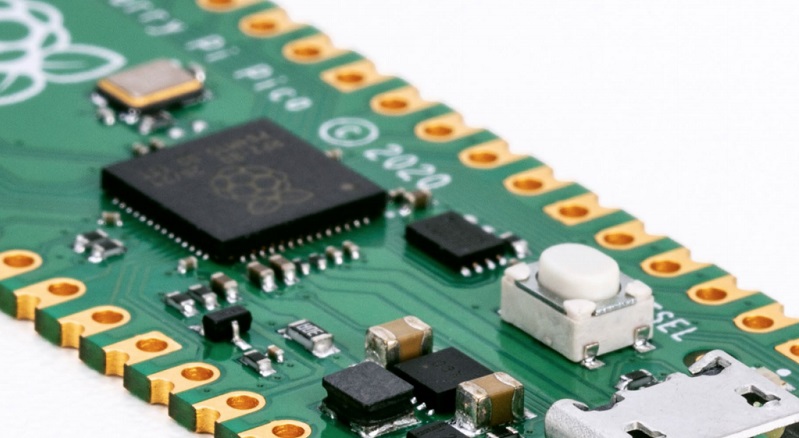
Power isn’t everything when it comes to computing. Something which we have increasingly seen in the IoT space where people are crafting unique automated solutions to many different tasks. And one of the core brains behind the growing IoT industry is the likes of the Raspberry Pi, the cheap microcomputer which can be connected to all manner of devices and programmed to perform a variety of tasks. And you thought Skynet was all about big powerful robots with guns.
The company is now branching out from microcomputers to microcontrollers, as Raspberry has unveiled its new Raspberry Pi Pico. It features a piece of custom silicon (called the RP2040) that it claims is powerful enough to be used for machine learning purposes, and yet is smaller than your average Raspberry Pi board:
The Raspberry Pi takes care of heavyweight computation, network access, and storage, while the microcontroller handles analog input and low-latency I/O and sometimes provides a very low-power standby mode.
The specs of the new RP2040 are as follows:
- Dual-core Arm Cortex-M0+ @ 133MHz
- 264KB (remember kilobytes?) of on-chip RAM
- Support for up to 16MB of off-chip Flash memory via dedicated QSPI bus
- DMA controller
- Interpolator and integer divider peripherals
- 30 GPIO pins, 4 of which can be used as analogue inputs
- 2 × UARTs, 2 × SPI controllers, and 2 × I2C controllers
- 16 × PWM channels
- 1 × USB 1.1 controller and PHY, with host and device support
- 8 × Raspberry Pi Programmable I/O (PIO) state machines
- USB mass-storage boot mode with UF2 support, for drag-and-drop programming
So, it’s not going to play Crysis, but at just $4, you aren’t going to find a microcontroller that is going to give you better value for money and is still more than capable of doing many things when combined with a bit of ingenuity.
Last Updated: January 25, 2021





















HvR
January 25, 2021 at 17:01
Sorry but this sentence does not make sense:
“The Raspberry Pi takes care of heavyweight computation, network access,
and storage, while the microcontroller handles analog input and
low-latency I/O and sometimes provides a very low-power standby mode.”
Whole unit is a Raspberry Pi, MCU pretty much have to do everything.
HvR
January 25, 2021 at 17:12
Okay sorry have just read the article see where you got it from…. so PREVIOUSLY if you wanted low latency I/O or analog you needed to pair the current Pi’s than typically run an OS with a third party MCU (like Mircochip or TI). This is not ideal as it falls outside the typical hobbyist/maker skillset as it involves small PCB layout, getting it made and getting the components placed/soldered which also becomes an expensive exercise for small quantities.
The PICO solves that problem.
HvR
January 25, 2021 at 17:14
FINALLY, see Arduino is also releasing a Nano board with the same chip with extras on it.
Going to get ordering for those small projects I’m always tinkering with.